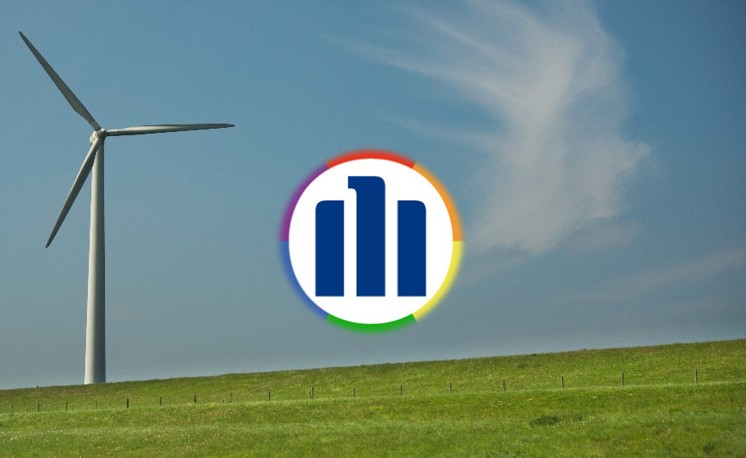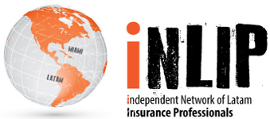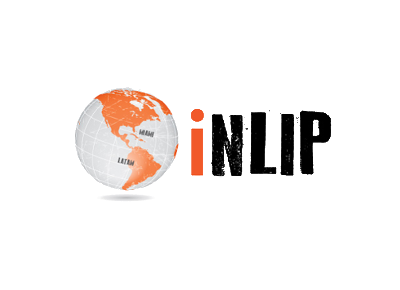
Most experts agree the energy sector is moving from hydrocarbon-based overreliance to cleaner, more sustainable solutions in the wake of global warming and climate change. Renewable, or green, energy from sources like solar and wind promise to provide a cleaner future, but the uncertainty of new technologies, financing and ownership challenges, other obstacles and even theft mean renewables can be risky for insurers and investors, alike.
Allianz Global Corporate & Specialty (AGCS) experts Carl Angelo Dill, Senior Underwriter, Renewable Energy and Patricia Marzullo – Regional Head of Engineering – South America, review loss trends, risks and insurance solutions in this vital space.
Renewable energy market trends
Renewable energy which, includes technologies such as solar photovoltaic (PV), wind power and geothermal, is still an emerging industry. In 2017, almost 20% of global energy consumption was renewable; expected to increase to 25% by 2035 and 34% by 2050[1]. Government subsidies, which have fed the boom, continue; Europe and the US, historically the strongest markets, were overtaken by China in 2017 as it accounted for roughly 45% of all global investment in an industry worth around $1.47trn and is anticipated to expand to $2.15trn by 2025[2].
The growth of renewable energy is driven mainly by two sources – sun and wind. Other forms play a role in specific regions, but tend to be more complex, less standardized, offer lower economies of scale and require larger investments to harness. Electricity from solar and wind should account for almost 50% of worldwide production by 2050 – the “50-by-50” model – while coal is predicted to shrink to just 12% compared with 37% today due to the possibility that coal may be banned or heavily taxed in future, as well as the fact that renewables are cheaper, cleaner and more sustainable long-term[3].
Clearly, the future is bright for renewable energy, particularly solar and wind. But with growth comes a proportional increase in risk and a need for solutions.
Latin America: the mecca of renewable energies
For the last decades, the Latin American market is using hydroelectric sources to generate energy, and in the recent years, this has been replaced by wind and solar plants with unlimited exploration capacity. The investment made in the region in wind turbines and photovoltaic panels in the last 3 years exceeded 50 billion dollars[4].
“The major countries in Latin America are already changing their way of generating energy. For years, Brazil has depended on hydroelectric plants that have a huge environmental impact and suffer with constant periods of drought. Brazil, along with Chile, Mexico, Argentina and Colombia account for 80% of the energy consumed in the region, so these countries need be upfront of renewable matrixes,” says Patricia.
In a region where geographic and climatic conditions contribute to the exploration of wind, sun and geothermal energy, the need for an energy generation conversion is urgent: with climate change arising from global warming caused by fossil fuels, Latin America will be the stage for a migration of millions in 2050 due to sea level rise, hurricane incidence and declining harvests[5].
Risks: Bigger blades, taller towers, stolen solar cells and other perils
As renewable energy technologies, distribution methods and business models evolve, risks keep growing. For example, prototypical or unproven equipment such as specialized blades and gearboxes and new maintenance concepts require constant technical evaluation and more underwriting expertise – for example, in order to benchmark different turbine types. Also, new financing and ownership structures and cost-saving measures impact operational efficiency and may result in challenges to long-term loss performance. If these aren’t perilous enough, climate change associated with more intense windstorms, hailstorms and flood events all make renewable energy a risky business for insurers and investors, alike.
Loss trends vary widely by industry sub-segments. For wind, loss trends vary from onshore to offshore. With onshore, turbines can suffer from gearbox failures which sometimes are associated with costly serial losses and fires which recently have caused insurance claims in the Euro millions, forcing insurers to review their portfolios. Another source of concern are natural perils such as lightning strikes which can cause blade delamination and windstorms which have resulted in turbine collapses. On top of this comes the constant evolution of technology risk. Larger rotor diameters and tower heights can result in higher dynamic loads and complex vibrations which increase rotor blade stress and impact the drive train. Along with aging equipment, pressure on maintenance budgets and reduced subsidies, these
exposures may affect loss patterns and long-term profitability. In the case of Brazil, for example, studies indicate that wind turbines are reaching an age where there is a greater risk of claims, demanding a better risk management.
With offshore wind, sub-sea cables cause about 80% of losses in terms of overall claims amount incurred, according to Allianz. From losses of entire cables during transport to bending of cables during installation as well as damage caused by anchors and vessels, sub-sea cable losses have driven multi million Euro claims in offshore wind. While technology risk is a driver in offshore wind, losses tend to be aggravated by complicated logistics, such as vessel availability, and the need to wait on fair weather conditions to venture out to make repairs. According to Allianz, the cost ratio between on- and offshore claims can reach 1:10.
Solar photovoltaic (PV) panels are subject to a wide range of natural hazards such as windstorm, flood, hail damage, wildfires and snow load, but are also susceptible to theft, as they are worth from $100 to well over $1,500 each. Other sources of large losses include transformer fires which can result in business interruption (BI) and frost heave which can damage racking and modules.
Finally, there are storage and distribution risks like undersea interconnectors which bear the risks of sub-sea cables and battery storage systems (BSS) exposed to thermal runaway for instance when Li-ion cells overheat and catch fire.
Insurance trends and challenges
As a growth market, the renewable energy insurance sector has attracted significant capital, leading to a soft market and many challenges for insurers. Premium has developed in line with installed capacity in the industry which has grown at an annual rate of around 8% since 2010. However, recent loss trends in many segments of the renewable energy industry have raised concerns over deductible and rate adequacy. From large hurricane losses to PV plants in Puerto Rico during Hurricane María in 2017 to fires devastating onshore wind turbines and repeated theft claims, the renewable energy industry suffers from frequency as well as severity events. Apart from this, challenges include a mix of risk engineering, price modeling, digital distribution and comprehensive product innovations, above and beyond traditional insurance solutions.
Risk consulting and engineering are challenged by rapidly evolving technologies requiring close monitoring of different elements like new wind turbines being developed and upgraded in ever shorter cycles. Keeping up with international engineering standards as well as certifications for equipment (e.g. type certification) and projects is also challenging.
Predictive maintenance and data analytics will drive innovative concepts for the evolving risks, eventually opening up opportunities for tailored insurance solutions.
Digital distribution continues to be influenced by smaller sizes and higher numbers of risks. While wide-scale PV and onshore wind plants can reach installed capacity in the gigawatt range, many installations are on the smaller end which requires more efficient handling. While PV and onshore wind continue to be standardized (e.g. through broker facilities and digital trading platforms), larger, more complex segments, like offshore wind, geothermal or concentrated solar power, will require thorough, case-by-case underwriting.
Renewable energy requires a comprehensive insurance product offering due to complex financing and ownership structures. Traditional products often are bundled across project phases and lines of business, while non-traditional products, such as protecting against a lack of wind or sun, aren’t fully exploited by customers yet, requiring further product integration. If implemented before financial closing, these can reduce financing costs and free-up capital. Other products cover upfront decommissioning costs for assets and lower capital requirements at the start of a project.
Traditional insurance solutions cover everything from project design to the end of its life cycle. Whether for engineering risk insurance, project liability, operational risks, transport and logistics risks, financial losses due to work delay and production interruption.
Recently, there has been increasing interest in alternative risk transfer solutions for parametric solutions that ensure the revenue stability of green energy park entrepreneurs. That is, the entrepreneurs transfer the risk of the volatility of the production fall due to lack of wind or sun (meteorological factors) for the insurance market through customized solutions, such as the Allianz Weather Solutions.
Insurance will continue to evolve along with the renewable energy industry as we move towards a greener, more sustainable world.
[1] McKinsey, Energy Insights: Global Energy Perspective 2019, Reference Case, January 2019
[2] Reuters, Renewable Energy Market Global Industry Analysis, Size, Share, Growth, Trends and Forecast 2019-2025, February 22, 2019
[3] Bloomberg New Energy Finance, New Energy Outlook 2018, June 19, 2018
[4] El País, The second renewable revolution in Latin America, 21 Nov 2018.
[5] World Bank, Annual Report, 2018.
As Global Senior Underwriter – Renewable Energy, in the Chief Underwriting Office Engineering, Carl Angelo Dill manages the global Green Energy initiative for AGCS. Working in London and Munich, he has been with AGCS for over 6 years. As an underwriter, he supports major international clients in the renewable energy space.
Regional Head of Engineering – South America, Patricia is accountable for Power underwriting at AGCS in South America. With more than 20 years of infrastructure and engineering insurance experience, she manages the department in charge of renewable energies for the South American market.
Renewable energy business risks: Expert commentary*
The Allianz Risk Barometer 2019 annual survey of risk managers, brokers, insurance professionals and Allianz experts identified the top five business risks for the Renewables Energy sector. Global Senior Underwriter – Renewable Energy at AGCS, Carl Angelo Dill, comments on the findings.
- BUSINESS INTERRUPTION: “Given the complex and often leveraged financing structures, loss of revenues resulting from business interruption will remain a key risk to the industry.”
- NATURAL CATASTROPHES: PATRICIA: “Global warming and its consequences are real. Disasters caused by increasing temperatures, rising sea levels, hurricanes and drastic climate changes affect society even more. “
- CHANGES IN LEGISLATION AND REGULATION: “Regulatory risk is key for the renewable energy industry as many business models are still dependent on feed-in tariffs and other forms of subsidies. Changes in regulation can disrupt business models. On the other hand it is worth mentioning that given the drop in levelized cost of energy (LCOE – in which the cost of the power produced by a source of energy over the course of its warranted lifetime is measured against that of other sources) more and more projects are competitive without any form of subsidies which is balancing regulatory risk.”
- CYBER INCIDENTS: PATRICIA: “An attack on a power grid can have devastating consequences on a city or country that is why the power industry has become a target for hackers around the world. The exploration of new energy matrixes and the use of new technologies may open the way for more attacks and the entire chain needs to anticipate that. “
- NEW TECHNOLOGIES: “The increasing use of electronic data and algorithms (e.g. for predictive maintenance) poses a new challenge and is likely to aggravate the risk of cyber errors. Apart from this there are a variety of technological risks that can result from the use of new materials and manufacturing methods (e.g. around solar panels which are produced with the help of 3D printing).”
* Source: Allianz Risk Barometer, 2019
About iNLIP, independet Network of Latin America Insurance Professionals












